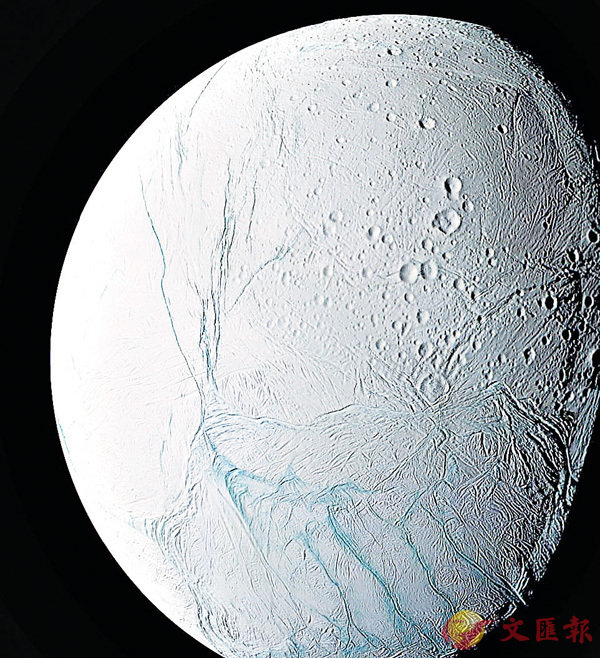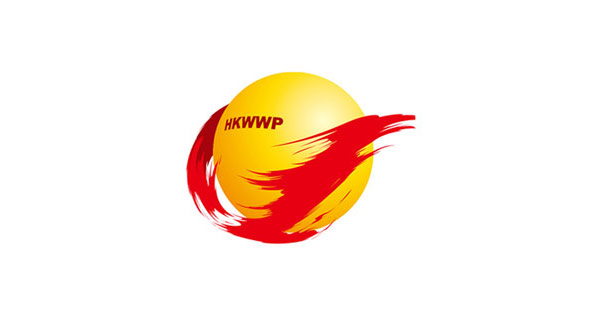 ■土衛二的「羽流」是從表面的縫隙中噴出。 資料圖片
■土衛二的「羽流」是從表面的縫隙中噴出。 資料圖片【原文】下文摘錄自香港《文匯報》2017年4月15日報道:
美國太空總署(NASA)(National Aeronautics and Space Administration)4月13日宣佈,最新科學證據顯示, 土星(Saturn)衛星(moon)「土衛二」(Enceladus)和木星衛星「木衛二」(Europa)具備孕育生命的條件。
研究人員發現,從土衛二冰層表面噴射出的羽流含氫氣(hydrogen),推斷是來自地下海洋和岩石產生的化學反應。
噴出「羽流」 水氫為主
同類化學反應亦在地球上發生,令微生物(microbe)得以生長,意味土衛二具製造生命的環境。 NASA同時透過哈勃太空望遠鏡(Hubble Space Telescope)發現木衛二噴出類似羽流(plumes),計劃於2020年代派遣「木衛二飛艇」(Europa Clipper)進行探索。
土星探測船(space probe)「卡西尼」(Cassini)號前年10月飛行至土衛二表面,穿過噴射出來的羽流,透過光譜儀(spectrometer)發現羽流中98%是水,1%是氫,其餘則是氨(ammonia)、二氧化碳(carbon dioxide)及甲烷(methane)等化學物。報告嘗試為氫的來源提供多個解釋,最有可能是蛇紋石化作用(serpenitinization),即熱水從土衛二的海床裂縫(crack)流出,和有豐富鐵(iron)含量的岩石發生作用,從而產生氫氣。
此前科學家一直未能掌握土衛二上是否存在氫氣,今次發現顯示它具備維持生命的潛能(potential)。在土衛二表面下海洋的氫在「產甲烷作用」(methanogenesis)中,可能和二氧化碳分子結合,產生甲烷。如果海洋確實有微生物,它們可藉這些化學作用獲取能量(fuel)維生。
每小時釋放300薄餅熱量
得州(Texas)西南研究院(Southwest Research Institute)地球化學家(geochemist)格萊因(Christopher Glein)表示,土衛二顯然有龐大的能量供應,相當於每小時釋放300塊薄餅的熱量,「這是我們首次可以算出外星(alien)海洋所蘊含的卡路里(calorie)數字」。
NASA判斷星球是否有生命存在的標準,在於液態水、代謝能量(metabolic energy)和化學成分如碳(carbon)、氫、氮(nitrogen)、氧(oxygen)、磷(phosphorus)和硫(sulfur)。
有份發表報告的研究員韋特(Hunter Waite)表示,現時仍未在土衛二的地下海洋探測到磷和硫,可能是分量太少,故難以偵測(detect),強調「卡西尼」號沒發現生命存在的跡象(indication),但認為已找到生命的食物庫,並打趣地指這儼如「微生物的糖果店」。
科學家亦把目光放在木衛二,計劃派「木衛二飛艇」穿過羽流搜集數據。韋特亦會應用他從「卡西尼」號得到的經驗,改良「木衛二飛艇」的質譜儀(mass spectrometer),毋須降落星球地面,亦不用鑽探海洋,也能進行觀察(observation)。兩項發現的報告均刊登在《科學》(Science)期刊。
Saturn's moon may breed life, NASA says
【譯文】NASA (National Aeronautics and Space Administration) announced on April 13 that Saturn's moon Enceladus and Jupiter's moon Europa could have the necessary conditions to harbour life, according to the latest findings. Researchers found that the jets of ice and gas coming from the surface of Enceladus contained hydrogen, probably resulting from the chemical reactions between the underground ocean and the rocky core underneath the saltwater.
"Plumes" contain water and hydrogen mostly
Similar chemical reactions also happen on Earth in order to give rise to microbes, implying that Enceladus has the essential ingredients needed to support life. NASA also discovered by using the Hubble Space Telescope that similar plumes were found on Europa, and it has planned to launch the Europa Clipper spacecraft in 2020 to perform a detailed investigation.
In October 2015, the space probe Cassini flew over to the surface of Enceladus and passed through the plumes. By using a spectrometer, it was found that the ingredients contributed to the plumes contained 98% water, 1% hydrogen, and the remaining percent a mixture of other molecules including ammonia, carbon dioxide and methane.
The report outlined a number of possible explanations to justify the source of hydrogen, among which the most justifiable reason was serpenitinization-with hot water from Enceladus' ocean flowing through cracks in the seafloor and then reacting with the iron-rich rock to produce hydrogen.
Scientists have been unable to identify the signs of hydrogen on Enceladus, but the findings have just proved it right that the moon holds the potential for habitability. By the process of methanogenesis, hydrogen resided in the underground ocean of Enceladus reacts with carbon dioxide to form methane. If there are microbes in the ocean, they can use the chemical substances produced as fuel.
Heat released per hour totals 300 pizzas
Christopher Glein, a geochemist of the Southwest Research Institute (SWRI) headquartered in Texas, believed that there was plenty of energy supply on Enceladus-equivalent to the energy released by 300 pizzas in each hour. He called the discovery as "the first assessment of the calorie count in an alien ocean".
In the NASA strategy for searching for life, the key indicators have always been liquid water, a source of metabolic energy and chemical elements such as carbon, hydrogen, nitrogen, oxygen, phosphorus and sulfur. Co-author of the report Hunter Waite said that phosphorus and sulfur were yet to be found on Enceladus or the ingredients were too few to be detected. He stressed that although Cassini found no solid indication for life, a food source was detected and it would be like a candy store for microbes.
Meanwhile, scientists are developing a new project for Europa by sending Europa Clipper to fly through the plumes to collect data. Waite would learn from the experience of Cassini to include an advanced mass spectrometer on Europa Clipper so that it could still make observations without landing on the moon's surface or diving into the ocean. The reports about the two discoveries have been published in the journal Science.■龐嘉儀
Q&A
1. NASA於何時成立?
2. NASA成立的背景源於當時美國與哪個國家進行太空競賽(space race)?
3. NASA於1960年代致力於進行一系列的登月任務,這項計劃名為什麼?
4. 承上題,第一位登月的太空人是誰?
5. NASA目前與哪些國家和地區合作建立國際太空站(International Space Station)?
1. 1958年
2. 蘇聯(Soviet Union)
3. 阿波羅計劃(Project Apollo)
4. 岩士唐(Neil Alden Armstrong)
5. 俄羅斯、日本、加拿大、巴西、歐洲

